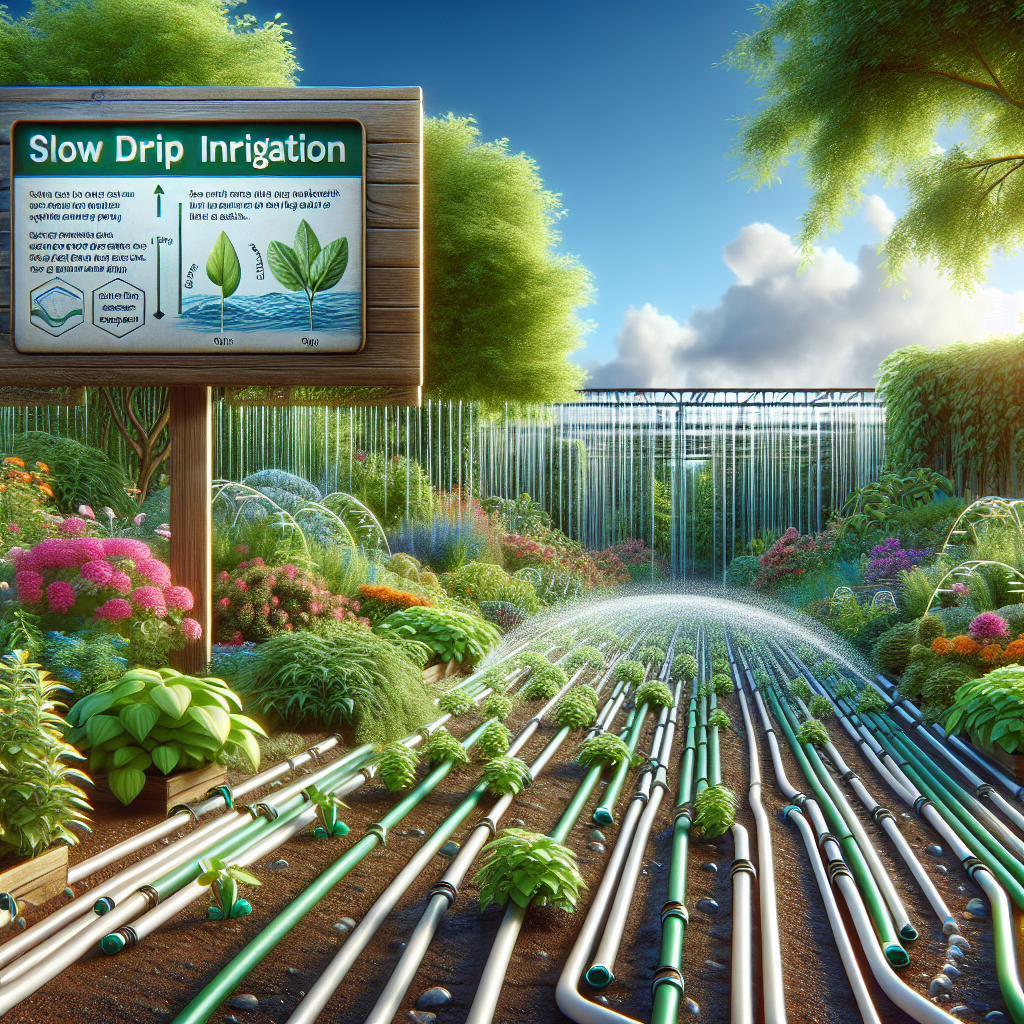Slow drip irrigation is a method of watering plants that involves delivering water directly to the roots at a slow and steady rate. This technique has been gaining popularity in gardening for its numerous benefits and advantages compared to traditional watering methods like sprinklers or hand-watering. In this article, we will explore the benefits of slow drip irrigation in gardening, as well as discuss how to implement this technique in your own garden.
One of the main advantages of slow drip irrigation is its efficiency in water conservation. By delivering water directly to the roots, this method minimizes evaporation and runoff, ensuring that plants receive the right amount of water they need without wasting any resources. This is especially important in areas where water is scarce or limited, as it helps gardeners reduce their water usage while maintaining healthy and thriving plants.
In addition to saving water, slow drip irrigation also helps prevent overwatering and underwatering of plants. Traditional watering methods like sprinklers can sometimes lead to uneven distribution of water, resulting in some plants getting too much water while others do not receive enough. With slow drip irrigation, gardeners can control the flow rate and duration of watering, ensuring that each plant gets sufficient moisture without drowning or drying out.
Furthermore, slow drip irrigation promotes healthier root development and overall plant growth. By delivering water directly to the roots, this method encourages plants to grow deep and strong root systems that are better equipped to withstand droughts and other environmental stresses. In turn, healthy roots lead to healthier plants with improved resistance to pests and diseases.
Another benefit of slow drip irrigation is its flexibility and adaptability to different garden layouts and plant types. Whether you have a small vegetable garden, a flower bed, or a large landscaping project, you can easily customize your drip system to fit your specific needs by adjusting the spacing between emitters or using different types of tubing. This level of customization allows gardeners to efficiently water their plants without having to constantly monitor or adjust their watering schedules.
Moreover, slow drip irrigation is a time-saving solution for busy gardeners who may not have the time or energy to hand-water their plants regularly. Once you have set up your drip system with a timer or controller, you can sit back and relax while your plants receive consistent and even watering throughout the day without any manual intervention. This hands-free approach not only saves time but also ensures that your plants are well-hydrated even when you are away from home.
In addition to these practical benefits, slow drip irrigation can also enhance the aesthetic appeal of your garden by reducing soil erosion and minimizing weeds growth. Unlike overhead sprinklers that can splash soil onto leaves and flowers, causing them to become dirty or damaged, drip emitters deliver water directly where it’s needed without disturbing the surrounding soil surface. This results in cleaner foliage and blooms that are free from debris or mud stains.
To implement slow drip irrigation in your own garden, you will need a few basic supplies such as tubing, emitters, connectors, stakes, and a timer or controller for automation. Start by laying out your tubing along the desired planting rows or beds and attaching emitters at regular intervals based on plant spacing requirements. Secure the tubing with stakes or clips to keep it in place and connect it to a reliable water source like a faucet or hose bib.
Next, set up a timer or controller according
to your preferred watering schedule – whether it’s daily intervals for vegetables or every few days for perennial flowers – so that your plants receive consistent moisture throughout the season. Monitor your system periodically for clogs,
leaks,
or other issues
that may arise
and make adjustments as needed
to ensure optimal performance
and efficiency.
In conclusion
,
slow
drip
irrigation is an effective,
efficient,
and environmentally-friendly method of watering g arden s that offers numerous benefits ranging from water conservation
(i.e., efficient use)
to improved plant health , root development , growth , flexibility , time savings , aesthetics ,
and weed control . By utilizing this technique , gard en ers can save time ,
save money ,
promote healthy p lants ,
protect t he environ ment ,
and enjoy more beautiful gardens all year round . Whether you’re growing vegetables , flowers , fruits , herbs ,
or ornamental shrubs ,
there’ s no doubt t hat implementing s low d rip irri gation can make all t he difference in achieving success ful gar deni ng results . So why wait ? Try it out today an d see for yourself what all t he fuss i s about !













